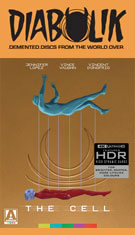
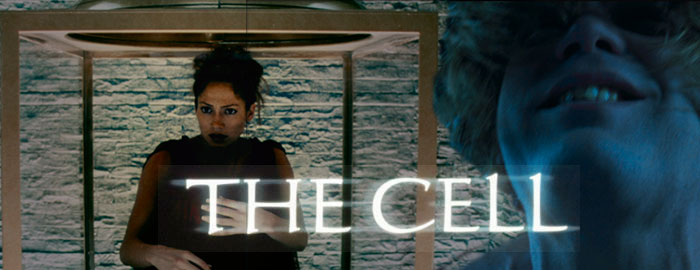
Color, 2000, 109 mins. 18 secs. / 107 mins. 19 secs.
Directed by Tarsem
Starring Jennifer Lopez, Vince Vaughn, Vincent D'Onofrio, Marianne Jean-Baptiste, Jake Weber, Dylan Baker, James Gammon, Tara Subkoff, Dean Norris, Patrick Bauchau, Pruitt Taylor Vince
Arrow Video (UHD & Blu-ray) (US/UK R0/RA 4K/HD), Warner Bros. (Blu-ray) (US R0 HD), Alliance (Blu-ray & DVD) (Canada R0 HD/NTSC), Kinowelt (DVD) (Germany R2 PAL), New Line (DVD) (US R1 NTSC), Entertainment in Video (DVD) (UK R2 PAL) / WS (2.39:1) (16:9)
A flamboyant capper on 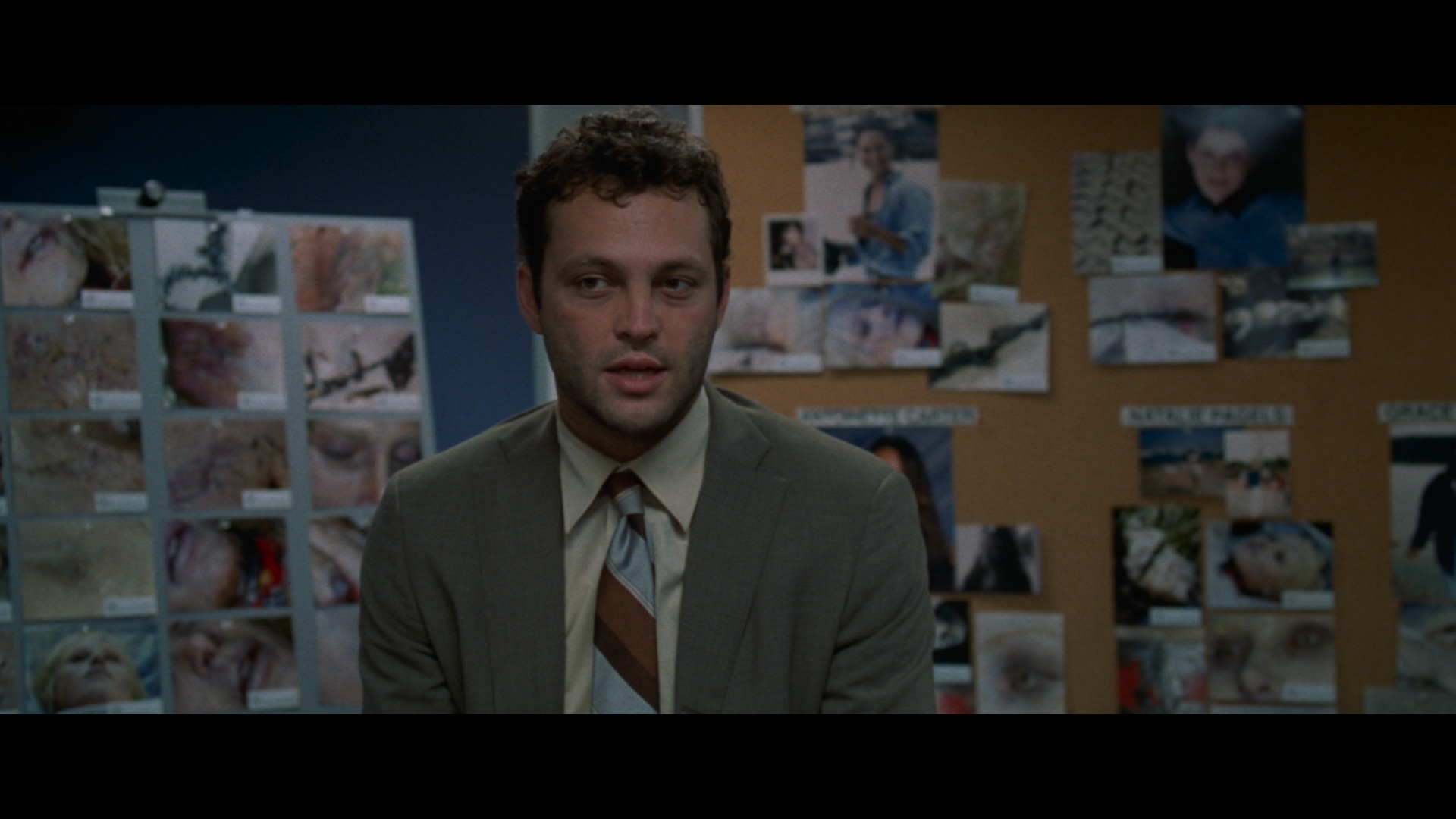 the serial killer movie craze that had been going strong since 1991's The Silence of the Lambs, The Cell was a
the serial killer movie craze that had been going strong since 1991's The Silence of the Lambs, The Cell was a 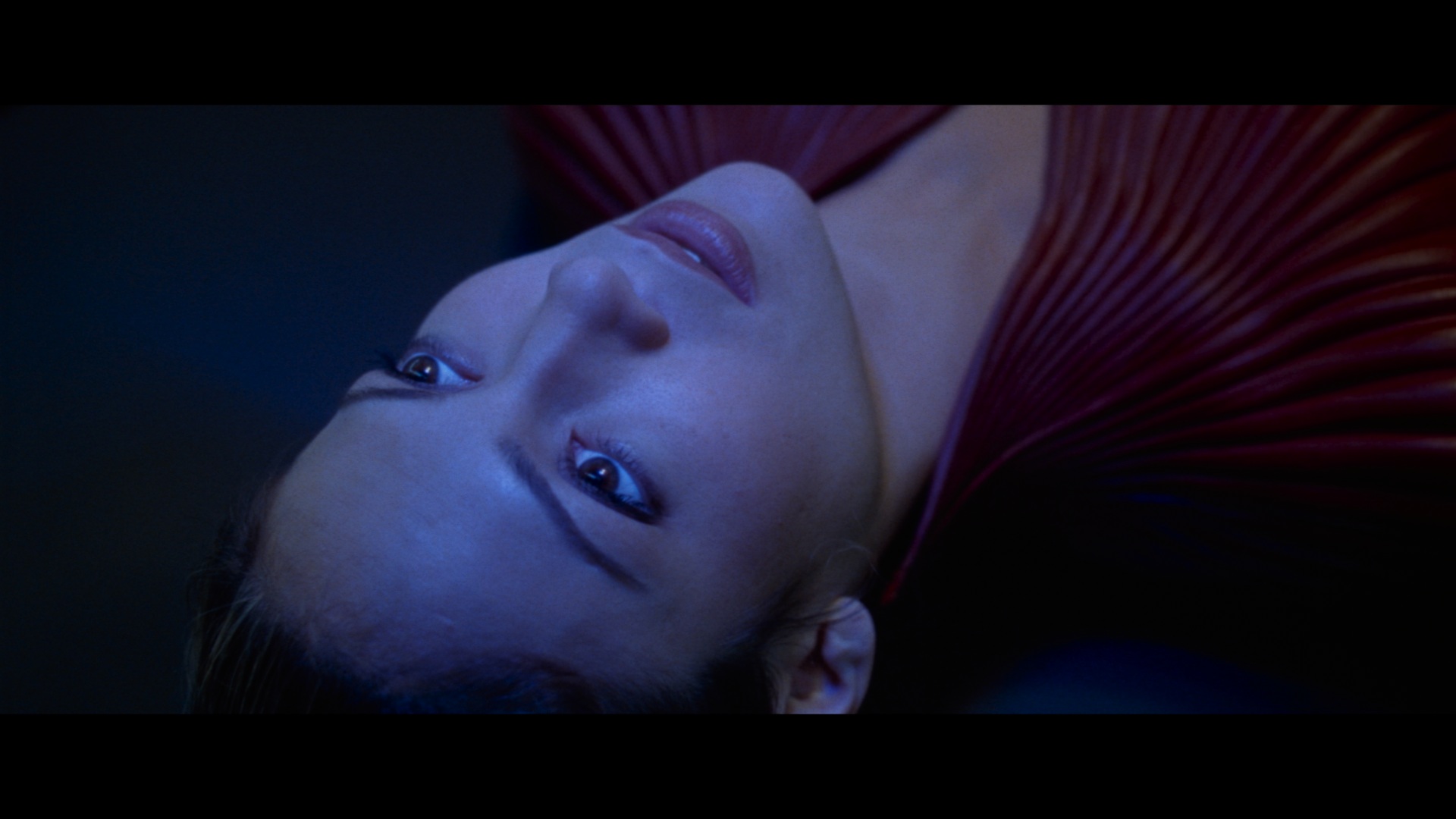 surprisingly daring and grotesque entry for a major Hollywood studio. It also served as a dramatic calling card for first-time feature director Tarsem Singh (simply billed as "Tarsem"), who had cut his teeth on music videos (most notably R.E.M.'s classic "Losing My Religion") and high-profile commercials. Juggling a barrage of artistic references, grueling shock sequences, and instant iconic costumes, the film was significantly toned down in the U.S. to earn an R rating but made its way uncut to most other territories; it also inspired a direct-to-video sequel and pointed the way to the more stylized and irrational next wave of serial killer successes to come soon after with Saw onward. Tarsem would on to direct five more features (including Immortals, Mirror Mirror, and his masterpiece The Fall), occasionally returning to the shorter forms that had initially put him on the map.
surprisingly daring and grotesque entry for a major Hollywood studio. It also served as a dramatic calling card for first-time feature director Tarsem Singh (simply billed as "Tarsem"), who had cut his teeth on music videos (most notably R.E.M.'s classic "Losing My Religion") and high-profile commercials. Juggling a barrage of artistic references, grueling shock sequences, and instant iconic costumes, the film was significantly toned down in the U.S. to earn an R rating but made its way uncut to most other territories; it also inspired a direct-to-video sequel and pointed the way to the more stylized and irrational next wave of serial killer successes to come soon after with Saw onward. Tarsem would on to direct five more features (including Immortals, Mirror Mirror, and his masterpiece The Fall), occasionally returning to the shorter forms that had initially put him on the map.
Dr. Catherine Deane (Lopez) has been spending an arduous amount of time using her creation, a neurological virtual reality system that puts her inside the minds of her patients, to treat a young comatose boy whose wealthy parents have gotten tired of waiting. Meanwhile serial killer Carl Stargher (D'Onofrio) engages in elaborate, fetishistic murders involving women trapped in makeshift cells and whose bleached bodies provide him sexual gratification while hoisted in the air. After the lunatic falls into a coma at the point of his capture, FBI Agent Peter Novak (Vaughn) recruits her to use her process to go into Stargher's aesthetically opulent mind to locate his most recent, hopefully living victim before it's too late. In the process she encounters Stargher's victimized younger self who might provide the key in more ways than one.
At the time of The Cell's release, it wasn't very surprising to find many critics lobbing the usual "style over substance" complaints that had dogged the 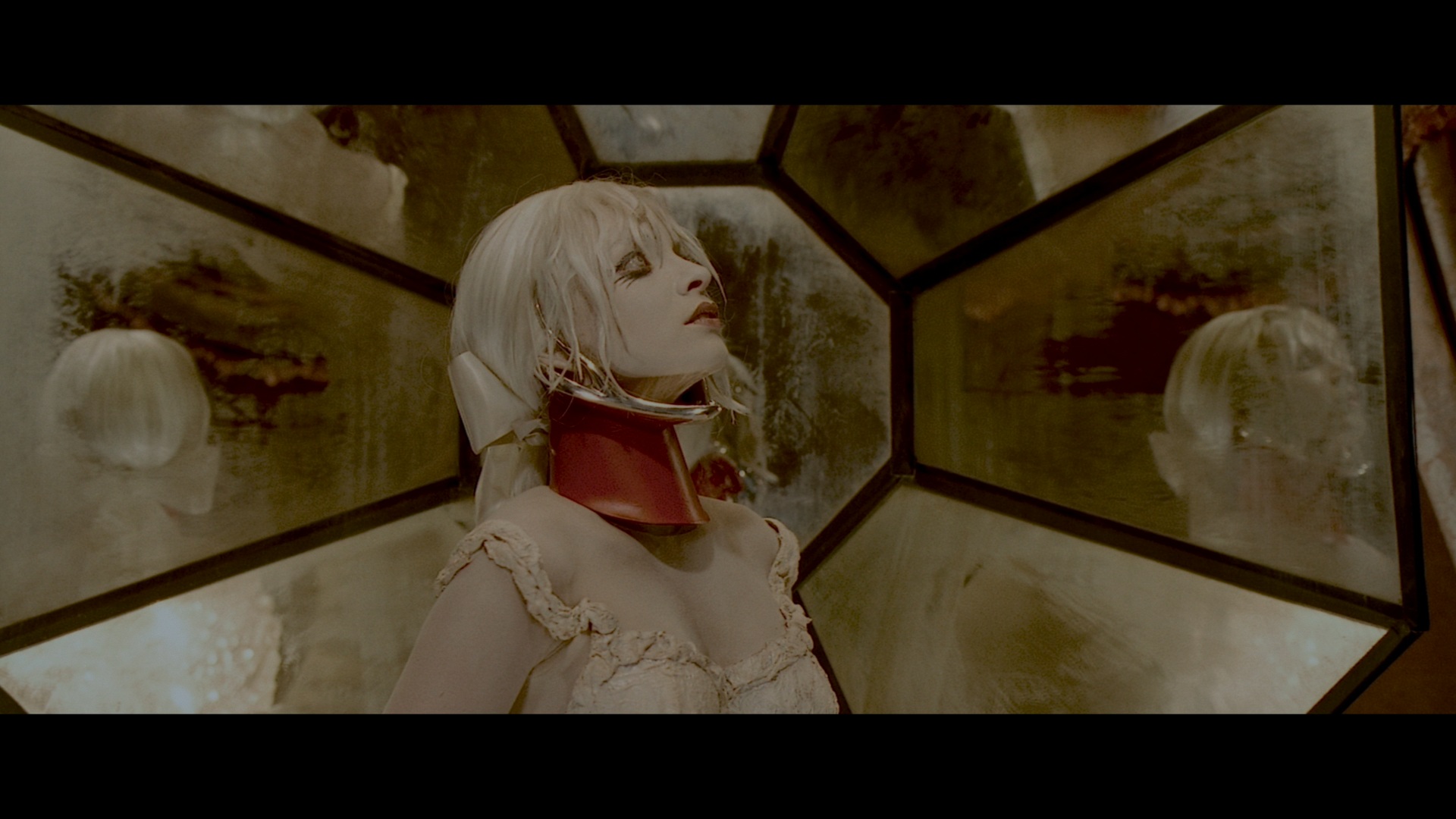 work of other directors like Ridley and Tony Scott, David Fincher, Kathryn Bigelow, and so on. Of course, time soon proved to
work of other directors like Ridley and Tony Scott, David Fincher, Kathryn Bigelow, and so on. Of course, time soon proved to 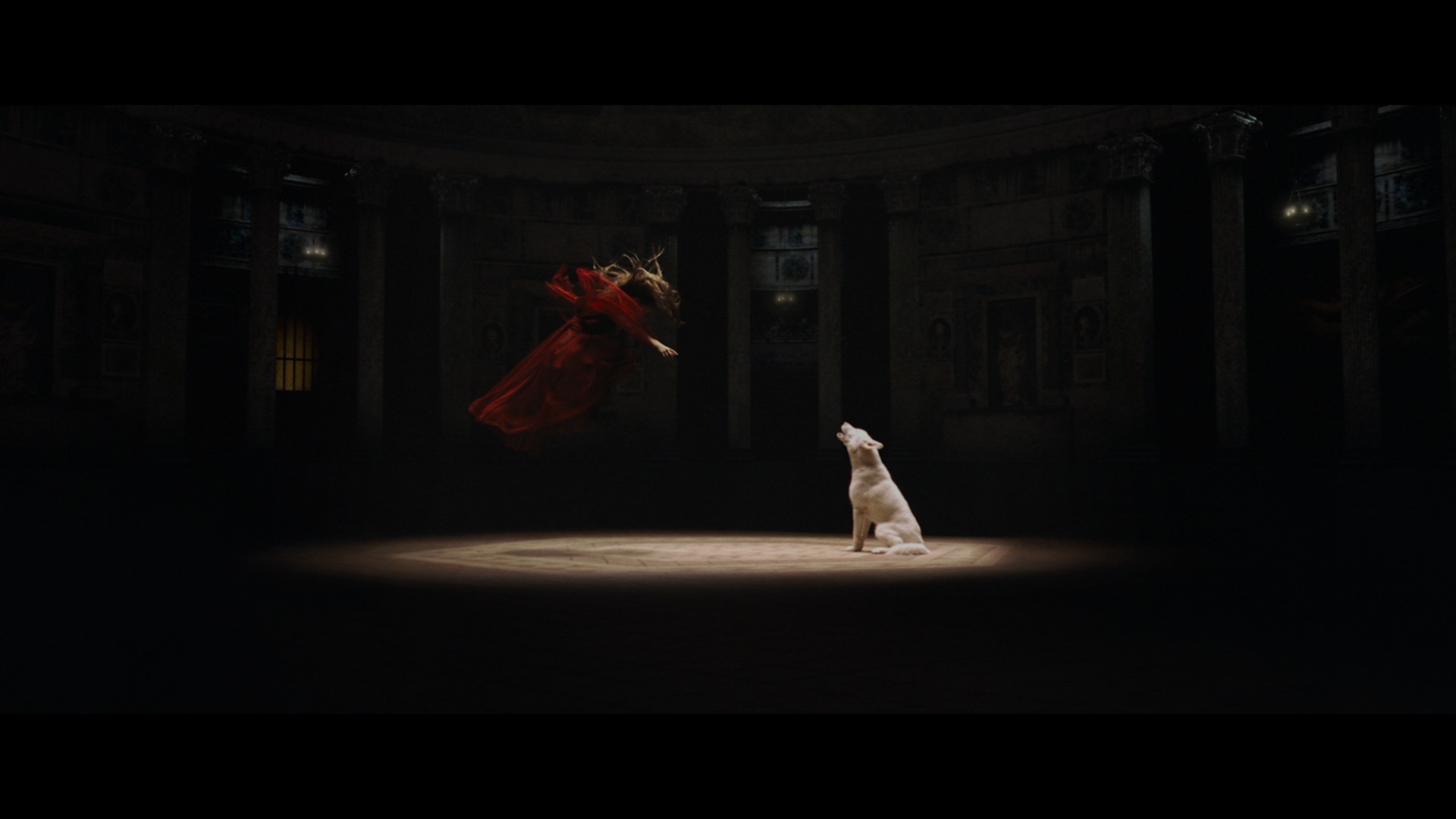 be on the film's side as it was not only a success at the box office but a significant cult favorite ever since with its strong imagery influenced numerous films in its wake. Almost entirely overlooked at the time was its outrageously impressive cast of character actors ranging from Mike Leigh veteran Marianne Jean-Baptiste to Dylan Baker (fresh off of the infamous Happiness) and a pre-Breaking Bad Dean Norris. Musically this also serves as a kind of conclusion to the serial killer trilogy scored by Howard Shore after The Silence of the Lambs and Seven, here mixing in a number of international influences for what ultimately becomes as operatic as the visuals on the screen.
be on the film's side as it was not only a success at the box office but a significant cult favorite ever since with its strong imagery influenced numerous films in its wake. Almost entirely overlooked at the time was its outrageously impressive cast of character actors ranging from Mike Leigh veteran Marianne Jean-Baptiste to Dylan Baker (fresh off of the infamous Happiness) and a pre-Breaking Bad Dean Norris. Musically this also serves as a kind of conclusion to the serial killer trilogy scored by Howard Shore after The Silence of the Lambs and Seven, here mixing in a number of international influences for what ultimately becomes as operatic as the visuals on the screen.
The Cell was a hot seller when it first hit DVD from New Line looking quite nice at the time with strong Dolby Digital 5.1 and 2.0 audio options and English SDH subtitles. You also got a jam-packed commentary by Tarsem, a second one compiling multiple production team members (director of photography Paul Laufer, production designer Tom Foden, makeup supervisor Michèle Burke, costume designer April Napier, visual effects supervisor Kevin Tod Haug, and composer Howard Shore), six multi-angled effects sequences (("The Hoist," "First Entry," "Second Entry," "Novak's Entry," "Catherine's World," "Edward's World"), a "Style as Substance: Reflections on Tarsem" (11m50s) featurette with extensive production footage and EPK-style chats with the actors, eight deleted scenes with optional Tarsem commentary ("Trapped in the Cell," "Despair in the Cell," "Extended Raid," "Early Exit," "Novak and Ramsey," "Stargher's Room," and extended "Confrontation with Carl" and "Carl with Victim"), two trailers, an isolated score, filmographies, and a curious 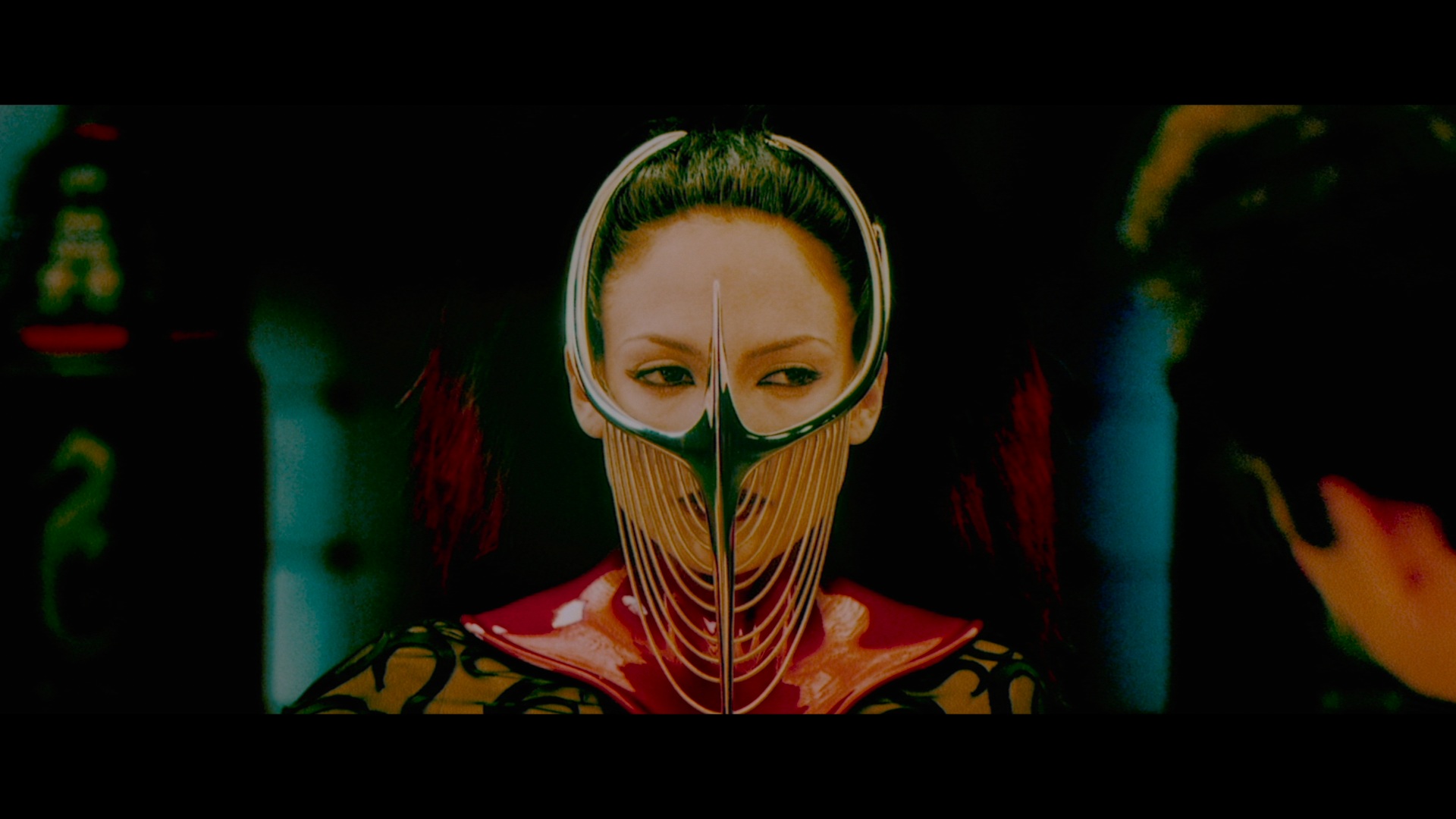 "empathy test" and a map of the brain. (Remember when DVDs used to regularly feature stuff like that?)
"empathy test" and a map of the brain. (Remember when DVDs used to regularly feature stuff like that?) 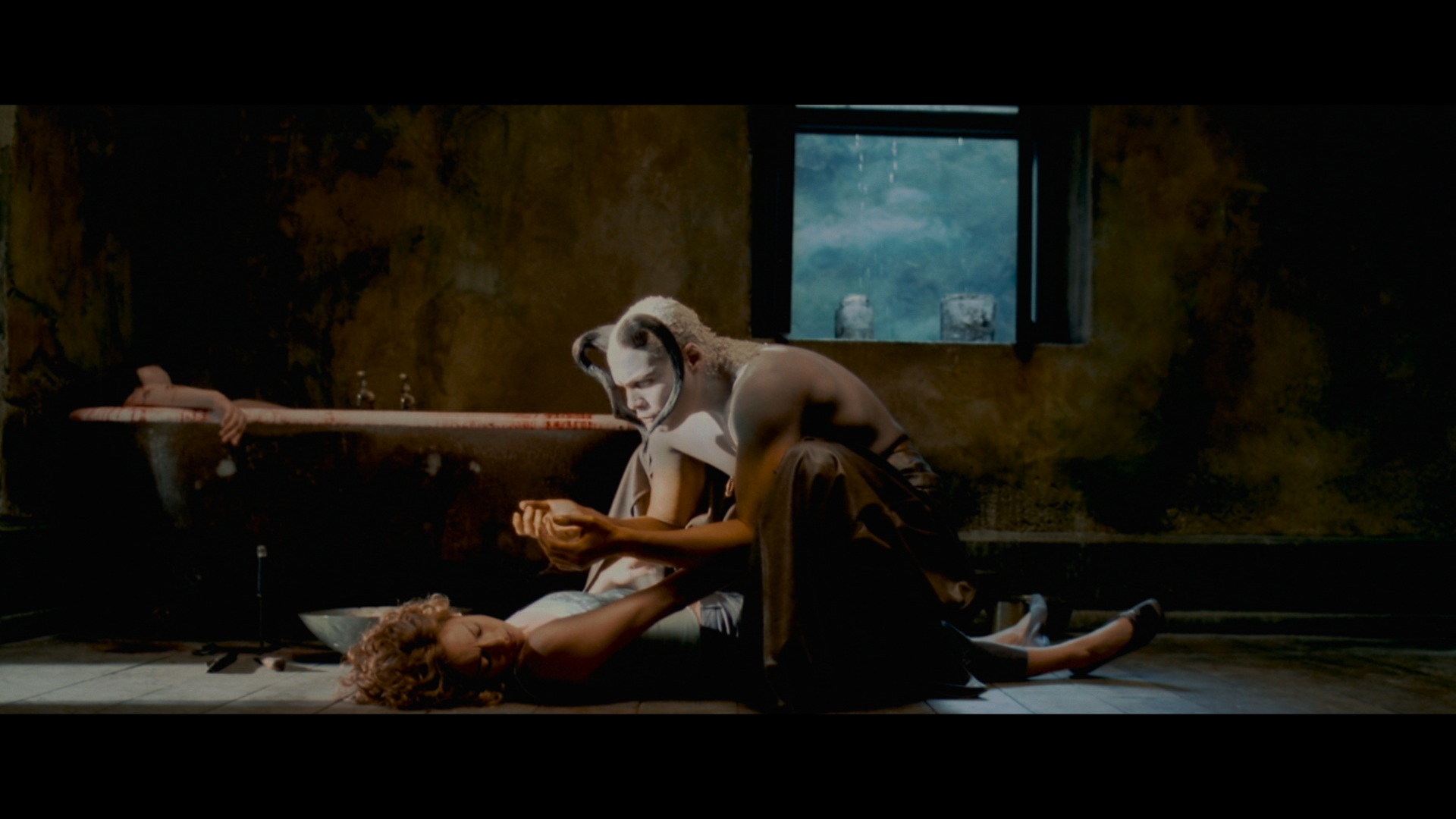 plus some DVD-Rom filler. The U.K. DVD offered the extended unrated director's cut of the film (you can read a breakdown of the differences here) but had fewer extras, especially ditching the second commentary track. A Canadian Blu-ray in 2013 proved to be a hot item for a while courtesy of Alliance, which featured the U.S. theatrical version but no significant extras; preferable was the subsequent U.S. Blu-ray from Warner Bros. in 2015 which ported over the useful bonus features and, as usual, had the U.S. cut. but in a much better new scan.
plus some DVD-Rom filler. The U.K. DVD offered the extended unrated director's cut of the film (you can read a breakdown of the differences here) but had fewer extras, especially ditching the second commentary track. A Canadian Blu-ray in 2013 proved to be a hot item for a while courtesy of Alliance, which featured the U.S. theatrical version but no significant extras; preferable was the subsequent U.S. Blu-ray from Warner Bros. in 2015 which ported over the useful bonus features and, as usual, had the U.S. cut. but in a much better new scan.
Flash forward a decade to 2025 when the film finally hit UHD from Arrow Video, with a separate Blu-ray option also available; both have the same bonus features and contain a second Blu-ray (more on that below). The film is presented at 2.39:1 in its theatrical framing with new 4K restoration of both the U.S. theatrical and director's cuts, approved by the director, with a nice DTS-HD MA 5.1 English audio track that fills up the room as powerfully as you'd expect. The film itself looks excellent with the UHD, featuring HDR10-compatible Dolby Vision, easily outclassing the presentation when it first hit theaters with a level of color saturation and shadow density that can look truly jaw-dropping. The initial pressing of the UHD was marred by a hiccup that accidentally repeated a bit of footage, but a replacement program was put in place and can be accessed by contacting the label here. The set also comes with an illustrated book containing new essays by Heather Drain, Marc Edward Heuck, Josh Hurtado, and Virat Nehru, plus reversible sleeve art featuring the original and newly commissioned art by Peter Savieri. Both prior commentaries are included here, plus two new ones starting with Josh Nelson and Alexandra 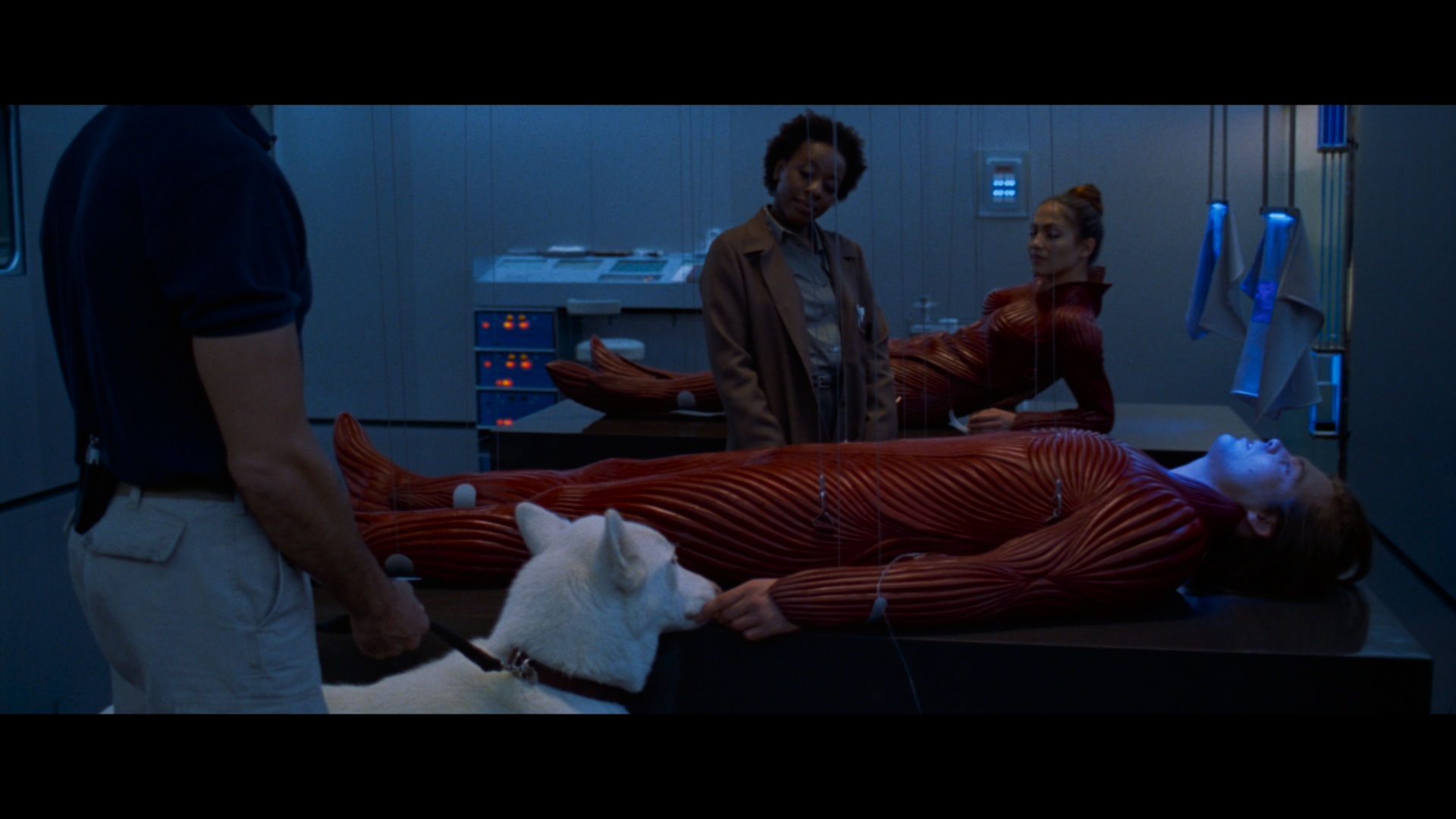 Heller-Nicholas focusing on Tarsem, gender politics, experimental film influences, and their fondness for the film. Then screenwriter Mark Protosevich and critic Kay Lynch have a thorough chat about the process of selling the script (his first to do so) in 1995 to MGM, the experience of seeing it come to fruition, and how the film functioned within the Hollywood system at the time. Also on the first disc are two new video bonuses: "Projection of the Mind's Eye" (89m39s), a feature-length interview with Tarsem covering his entire life and career including the movie and TV influences that shaped him, the different cultures and languages that informed him, and the process of making this film incorporating
Heller-Nicholas focusing on Tarsem, gender politics, experimental film influences, and their fondness for the film. Then screenwriter Mark Protosevich and critic Kay Lynch have a thorough chat about the process of selling the script (his first to do so) in 1995 to MGM, the experience of seeing it come to fruition, and how the film functioned within the Hollywood system at the time. Also on the first disc are two new video bonuses: "Projection of the Mind's Eye" (89m39s), a feature-length interview with Tarsem covering his entire life and career including the movie and TV influences that shaped him, the different cultures and languages that informed him, and the process of making this film incorporating 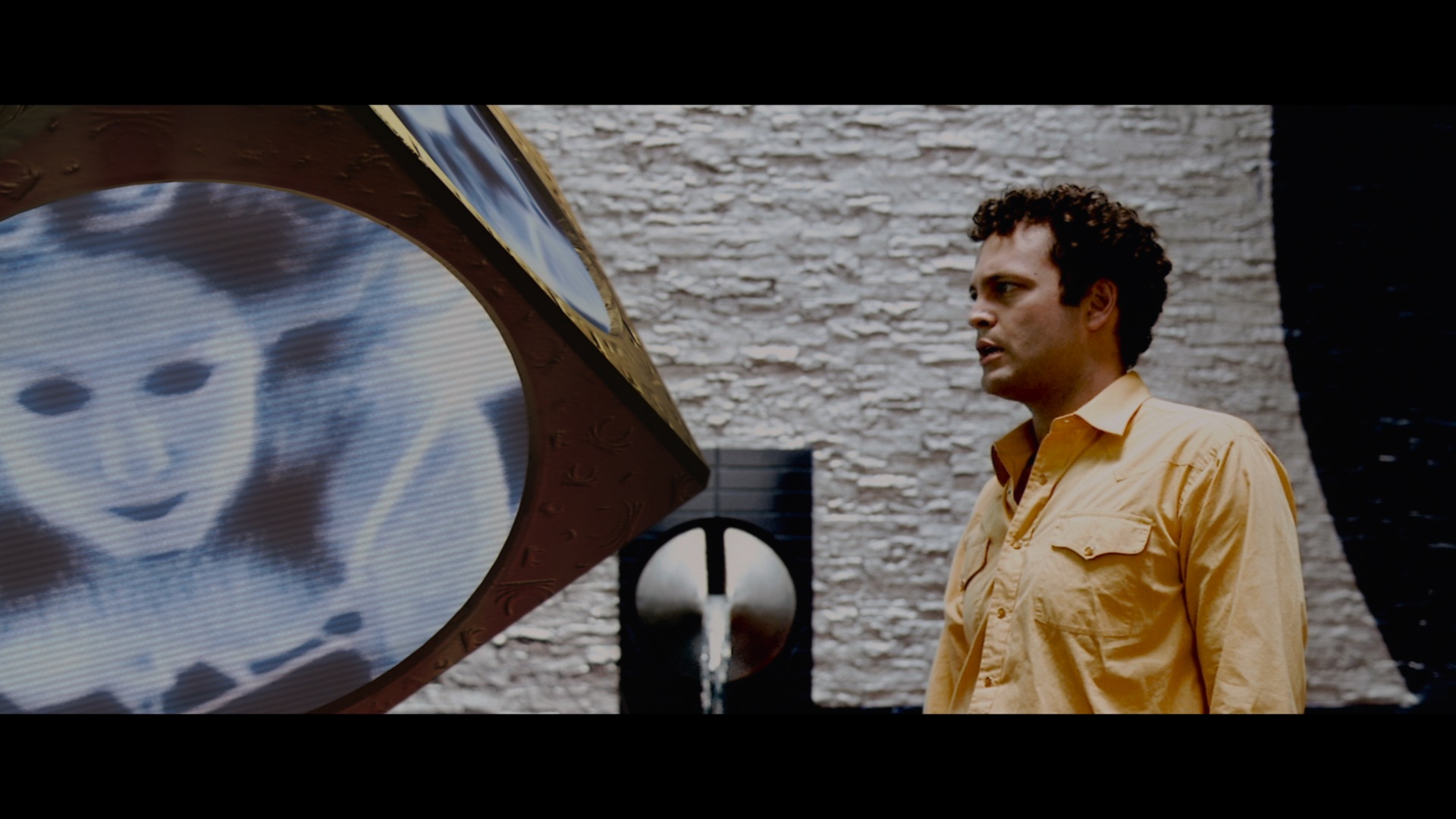 a slew of artistic references that sometimes required recalibration on the set; and "Between Two Worlds" (43m16s), an in-depth interview with Laufer about his background including a career-making Levi's commercial, his rapport with Tarsem, and the process of figuring out how to execute the challenging look of the evolving fantasy sequences including the then-innovative beach bypass process for film.
a slew of artistic references that sometimes required recalibration on the set; and "Between Two Worlds" (43m16s), an in-depth interview with Laufer about his background including a career-making Levi's commercial, his rapport with Tarsem, and the process of figuring out how to execute the challenging look of the evolving fantasy sequences including the then-innovative beach bypass process for film.
The bonus Blu-ray carries over the archival extras here (the deleted scenes with optional commentary, the visual effects vignettes, U.S. and international trailer, the making-of featurette) but adds some substantial new elements as well. The big curiosity here is the inclusion of the open matte version of the film (1.78:1) created by Laufer, which is quite fun to watch as it gives you a much more spacious look at the production design in the fantasy sequences and, in some scenes, features quite different color grading. That choice is explained in the new "Paul Laufer Illuminates" (10m47s) in which he explains the rationale and story behind the alternate master due to the lens choice on the film and the fact that this was originally struck from the negative for DVD use. "Art is Where You Find It" (12m32s) features Heller-Nicholas surveying more of the art references scattered throughout the film including some carryovers from his music video work and nodding to everything from modern photography to religious paintings. Then "The Costuming Auteur" (10m37s) is a visual essay by film critic Abbey Bender about the pivotal contributions of costume designers Eiko Ishioka (who took home an Oscar for Bram Stoker's Dracula). Finally you get a 5m41s image gallery that could easily hang on the wall of a museum.
Reviewed on May 21, 2025





 the serial killer movie craze that had been going strong since 1991's The Silence of the Lambs, The Cell was a
the serial killer movie craze that had been going strong since 1991's The Silence of the Lambs, The Cell was a  surprisingly daring and grotesque entry for a major Hollywood studio. It also served as a dramatic calling card for first-time feature director Tarsem Singh (simply billed as "Tarsem"), who had cut his teeth on music videos (most notably R.E.M.'s classic "Losing My Religion") and high-profile commercials. Juggling a barrage of artistic references, grueling shock sequences, and instant iconic costumes, the film was significantly toned down in the U.S. to earn an R rating but made its way uncut to most other territories; it also inspired a direct-to-video sequel and pointed the way to the more stylized and irrational next wave of serial killer successes to come soon after with Saw onward. Tarsem would on to direct five more features (including Immortals, Mirror Mirror, and his masterpiece The Fall), occasionally returning to the shorter forms that had initially put him on the map.
surprisingly daring and grotesque entry for a major Hollywood studio. It also served as a dramatic calling card for first-time feature director Tarsem Singh (simply billed as "Tarsem"), who had cut his teeth on music videos (most notably R.E.M.'s classic "Losing My Religion") and high-profile commercials. Juggling a barrage of artistic references, grueling shock sequences, and instant iconic costumes, the film was significantly toned down in the U.S. to earn an R rating but made its way uncut to most other territories; it also inspired a direct-to-video sequel and pointed the way to the more stylized and irrational next wave of serial killer successes to come soon after with Saw onward. Tarsem would on to direct five more features (including Immortals, Mirror Mirror, and his masterpiece The Fall), occasionally returning to the shorter forms that had initially put him on the map. work of other directors like Ridley and Tony Scott, David Fincher, Kathryn Bigelow, and so on. Of course, time soon proved to
work of other directors like Ridley and Tony Scott, David Fincher, Kathryn Bigelow, and so on. Of course, time soon proved to  be on the film's side as it was not only a success at the box office but a significant cult favorite ever since with its strong imagery influenced numerous films in its wake. Almost entirely overlooked at the time was its outrageously impressive cast of character actors ranging from Mike Leigh veteran Marianne Jean-Baptiste to Dylan Baker (fresh off of the infamous Happiness) and a pre-Breaking Bad Dean Norris. Musically this also serves as a kind of conclusion to the serial killer trilogy scored by Howard Shore after The Silence of the Lambs and Seven, here mixing in a number of international influences for what ultimately becomes as operatic as the visuals on the screen.
be on the film's side as it was not only a success at the box office but a significant cult favorite ever since with its strong imagery influenced numerous films in its wake. Almost entirely overlooked at the time was its outrageously impressive cast of character actors ranging from Mike Leigh veteran Marianne Jean-Baptiste to Dylan Baker (fresh off of the infamous Happiness) and a pre-Breaking Bad Dean Norris. Musically this also serves as a kind of conclusion to the serial killer trilogy scored by Howard Shore after The Silence of the Lambs and Seven, here mixing in a number of international influences for what ultimately becomes as operatic as the visuals on the screen.  "empathy test" and a map of the brain. (Remember when DVDs used to regularly feature stuff like that?)
"empathy test" and a map of the brain. (Remember when DVDs used to regularly feature stuff like that?)  plus some DVD-Rom filler. The U.K. DVD offered the extended unrated director's cut of the film (you can read a breakdown of the differences here) but had fewer extras, especially ditching the second commentary track. A Canadian Blu-ray in 2013 proved to be a hot item for a while courtesy of Alliance, which featured the U.S. theatrical version but no significant extras; preferable was the subsequent U.S. Blu-ray from Warner Bros. in 2015 which ported over the useful bonus features and, as usual, had the U.S. cut. but in a much better new scan.
plus some DVD-Rom filler. The U.K. DVD offered the extended unrated director's cut of the film (you can read a breakdown of the differences here) but had fewer extras, especially ditching the second commentary track. A Canadian Blu-ray in 2013 proved to be a hot item for a while courtesy of Alliance, which featured the U.S. theatrical version but no significant extras; preferable was the subsequent U.S. Blu-ray from Warner Bros. in 2015 which ported over the useful bonus features and, as usual, had the U.S. cut. but in a much better new scan. Heller-Nicholas focusing on Tarsem, gender politics, experimental film influences, and their fondness for the film. Then screenwriter Mark Protosevich and critic Kay Lynch have a thorough chat about the process of selling the script (his first to do so) in 1995 to MGM, the experience of seeing it come to fruition, and how the film functioned within the Hollywood system at the time. Also on the first disc are two new video bonuses: "Projection of the Mind's Eye" (89m39s), a feature-length interview with Tarsem covering his entire life and career including the movie and TV influences that shaped him, the different cultures and languages that informed him, and the process of making this film incorporating
Heller-Nicholas focusing on Tarsem, gender politics, experimental film influences, and their fondness for the film. Then screenwriter Mark Protosevich and critic Kay Lynch have a thorough chat about the process of selling the script (his first to do so) in 1995 to MGM, the experience of seeing it come to fruition, and how the film functioned within the Hollywood system at the time. Also on the first disc are two new video bonuses: "Projection of the Mind's Eye" (89m39s), a feature-length interview with Tarsem covering his entire life and career including the movie and TV influences that shaped him, the different cultures and languages that informed him, and the process of making this film incorporating  a slew of artistic references that sometimes required recalibration on the set; and "Between Two Worlds" (43m16s), an in-depth interview with Laufer about his background including a career-making Levi's commercial, his rapport with Tarsem, and the process of figuring out how to execute the challenging look of the evolving fantasy sequences including the then-innovative beach bypass process for film.
a slew of artistic references that sometimes required recalibration on the set; and "Between Two Worlds" (43m16s), an in-depth interview with Laufer about his background including a career-making Levi's commercial, his rapport with Tarsem, and the process of figuring out how to execute the challenging look of the evolving fantasy sequences including the then-innovative beach bypass process for film. ![]()